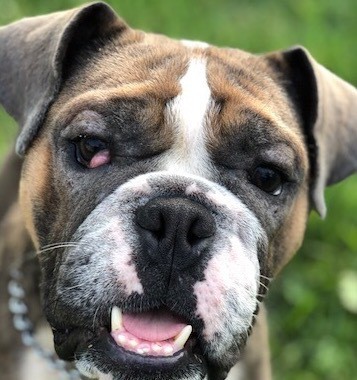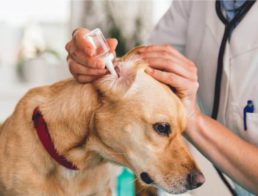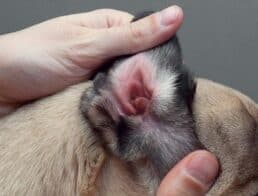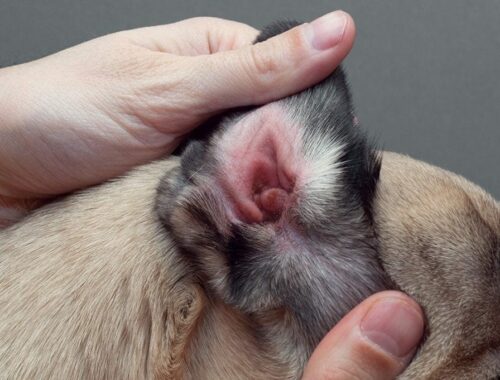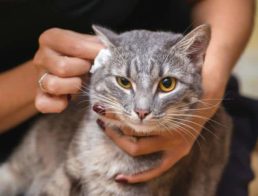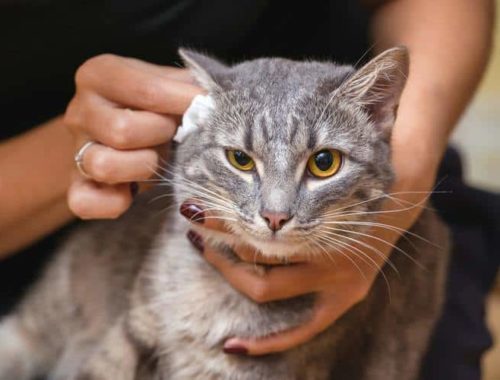Question: What is cherry eye and is it dangerous if left untreated?
We are looking into adopting a dog from a rescue. He has a cherry eye. The vet they work with recommended they leave it alone with no treatment. I don’t know how long he’s had it as he is a rescue, is there a noninvasive alternative to surgery? I do understand they are a rescue but our concern is, can this impair his vision? If this isn’t treated it will cause a more expensive treatment later on. It does seem irritated and large. Thank you for your advice.
–Jessica
Answer:
Dear Jessica,
I’m so glad to hear you’re thinking about adopting a dog. Did you know the ASPCA estimates around 3.3 million dogs enter the shelter system in the United States each year? It’s awesome that you will be giving one of them a nice home!
I understand your concerns about that strange thing dogs get that many people call “cherry eye.” It’s called that because the pink tissue in the corner of the dog’s eye looks kind of like a cherry.
What Is Cherry Eye in Dogs?
The veterinary term is the prolapsed gland of the nictitating membrane. The nictitating membrane is also called the “third eyelid.” It’s that triangle of pink tissue that raises up from the inner corner of a dog’s eye when he’s sleepy or sedated.
The third eyelid has a tear gland in it that produces about one-third of a dog’s total tears. There is also a T-shaped piece of cartilage inside the tissue of the third eyelid.
An inherited trait can lead to the of cartilage curling up in an abnormal way. When that happens, the tear gland part of the third eyelid is pushed up so it’s exposed in the corner of the eye. Once the cartilage is curled, the dog can’t relax the tissue back down into its normal hidden position.
Dogs can be affected by “cherry eye” in one or both eyes. Certain breeds are more likely to develop the abnormality, including Beagles, Boston Terriers, any bully breed, Shih Tzus, and Great Danes. While any aged dog can develop cherry eye, it usually appears when they’re less than two years old.
Does Cherry Eye Cause Problems?
I’ve seen many dogs who went through their entire lives with cherry eye. It doesn’t cause life-threatening problems, but it can cause a crusty discharge on the eyelid. The tissue may become irritated from being exposed all the time.
Sometimes, the surface of the eye (the cornea) becomes inflamed from being rubbed by the cherry eye tissue. Finally, since the tear gland that’s poking out makes a third of the dog’s tears, the eye can become drier than normal. That may lead to problems if the other glands around the eye don’t take up the slack in tear production.
Treatment for Cherry Eye
There is not a non-invasive treatment for cherry eye. Some vets prescribe antibiotic/anti-inflammatory eye ointment to keep the tissue moist and comfortable, but it doesn’t make the cherry eye go away.
The surgery to treat cherry eye has a pretty good rate of success, but sometimes the tissue can pop out again. If there’s a veterinary ophthalmologist near you might look into getting a referral to them. They’re pretty good at getting that surgery right the first time!
You’re right to be concerned about cherry eye. It may never cause a problem, but it could cause issues that make the surgery necessary later in life.
Good luck with your new friend!
Sincerely,
TB Thompson DVM
Disclaimer: Your use of the Ask The Vet feature is subject to the Ask The Vet Terms of Use.


